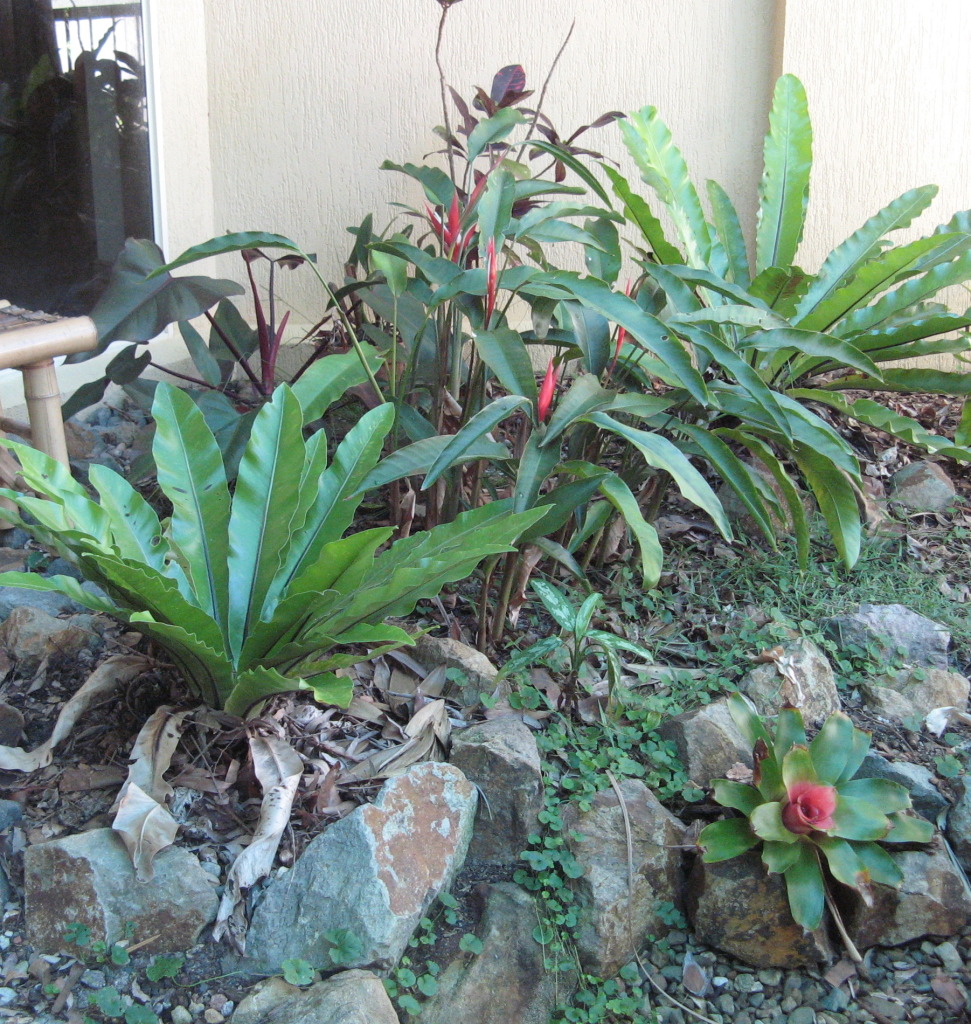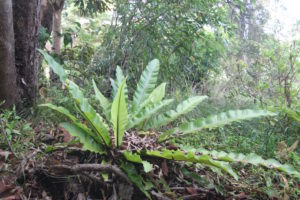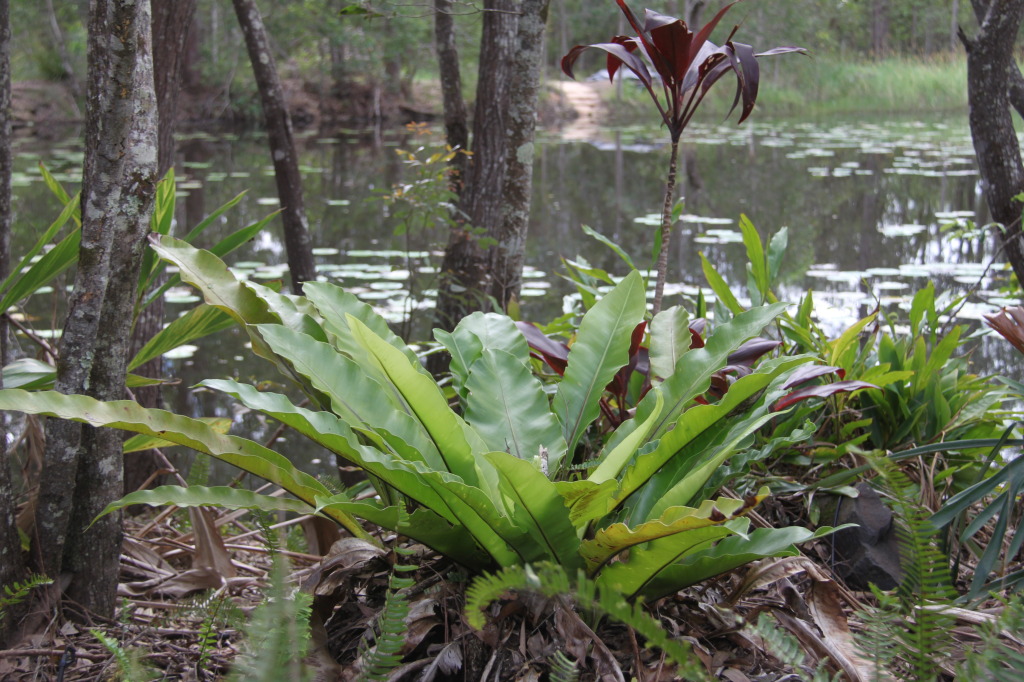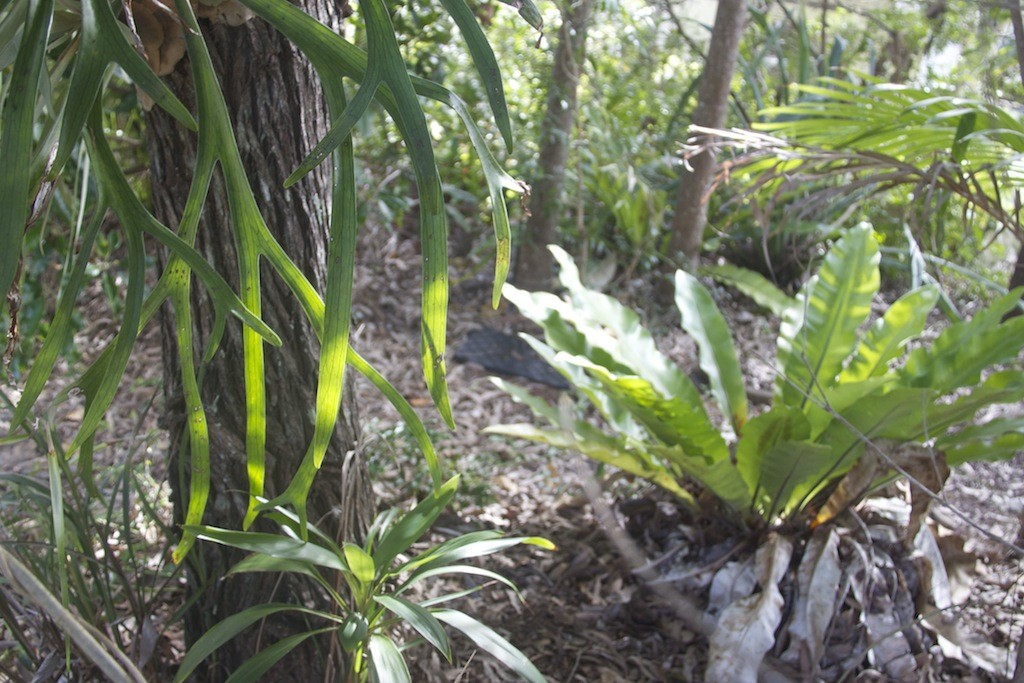A very reliable, easily cultivated fern, the Birds Nest Fern prefers moisture, but can tolerate dry spells. The rosette of radiating fronds grows to 1.5 metres in optimum conditions.
Like most ferns, the Birds Nest Fern requires a sheltered, shady area away from direct sunlight. This makes it ideal for a south facing courtyard or as a feature plant under trees. Alternatively grow it in a pot that is filled with orchid mix so that you can move it around the garden.
As ferns prefer well drained, mulched soil, use a layer of composted fallen leaves on the soil to emulate a rainforest floor. A twice yearly light application of a native plant fertilizer sprinkled in the centre of the fern will promote healthy growth and protect the plant from diseases such as scale.
It is illegal to take native ferns and orchids from their natural habitat but fortunately this fern is readily available in commercial nurseries.

Bird’s Nest Ferns interplanted with Heliconia Holiday and a single Bromeliad that picks up the red flowering Heliconia, and other exotics. Native Violets (Viola hederacea) and Rainforest Grass (Oplismenus undulatifolius) tumble over the rocks.

In a naturalistic garden, another example the Bird’s Nest Fern used as focal point against a backdrop of native shrubs and trees and grasses.
This article is part of our Gardening with natives series.


